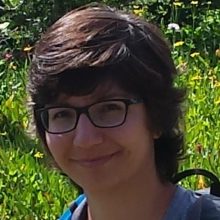PhD Candidate, University of California Santa Barbara
Email
Abstract
Enabling next generation mobile networks with millimeter wave communication
Advances in wireless services in recent years have aroused an expectation for abundant mobile data among cellular users. In order to meet this expectation, mobile networks are moving toward smaller cells and larger bandwidths. A key bottleneck in this evolution is backhaul connectivity for the newly added base stations. Wired backhaul solutions like fiber require costly and time-consuming deployment and maintenance and are not a scalable solution for such emerging picocellular networks. Wireless backhaul is an attractive alternative with fast, robust deployment, but in order to compete with fiber in terms of throughput, large bandwidth and vigorous spatial reuse is a necessity. By combining large available bandwidths with the highly directional links formed by moderately sized antennas, mm wave links provide the necessary data rate and spatial isolation to deliver backhaul-grade throughput to picocellular base stations. The modeling of mesh networks of such highly directional links, and the development of optimal resource allocation methods, accounting for interference, propagation geometry, and transceiver constraints, are a main focus of my research.
The benefits of mmwave communication can also be utilized within the picocell for base station to mobile communication. High-speed directional mmwave links can replace or complement existing frequency bands to provide orders of magnitude gains in per-user throughput. For reliable communication on these links, however, mobile users must be tracked robustly to maintain the narrow beams formed by large mmwave antenna arrays. To this end, my research focuses on low-overhead and scalable compressive channel sensing techniques for training large arrays and tracking the dominant propagation paths with modest hardware requirements. Our latest result is a fast, robust tracking algorithm compatible with existing wireless standards and hardware.
Bio
Maryam received her B.S. degree in Electrical Engineering from Isfahan University of Technology, Isfahan, Iran in 2007 and her M.S. degree in from Sharif University of Technology, Tehran, Iran in 2009. She is currently a PhD student at UC Santa Barbara, working with Prof. Madhow in the Wireless Communication and Sensornets laboratory, where her work has been in the areas of millimeter wave communication, signal processing and distributed MIMO systems.
Her past research has been on wave propagation and channel modeling for mmwave wireless links, as well as frequency and phase synchronization for distributed beamforming and MIMO. She is currently focused on research enabling next generation mobile networks, including resource allocation and routing for mmwave mesh networks – to be used as high-speed and easily deployable backhaul for small urban cells, and noncoherent compressive training of large antenna arrays for fast tracking of mobile users and maintaining high speed directional links inside the cell.
